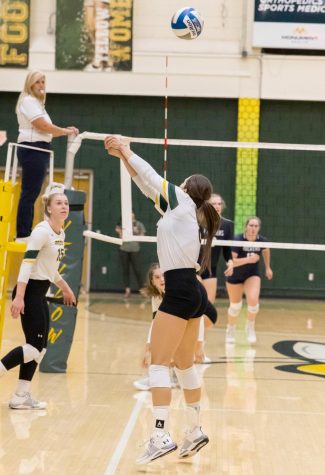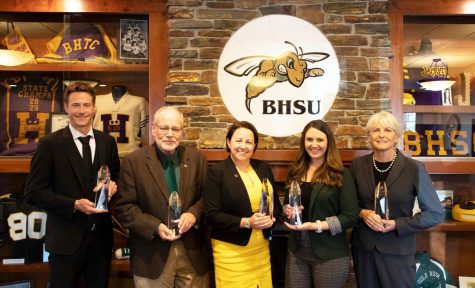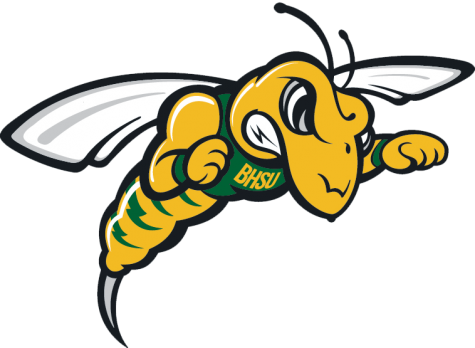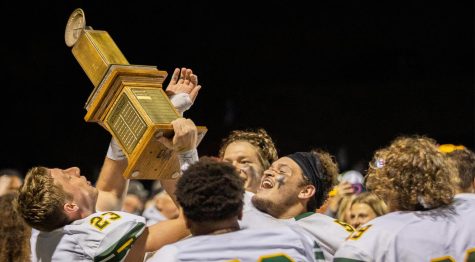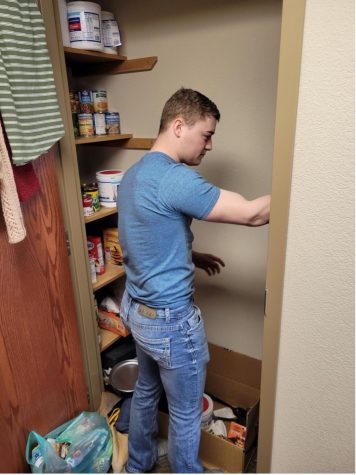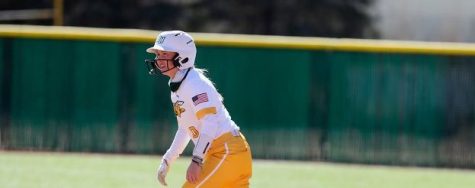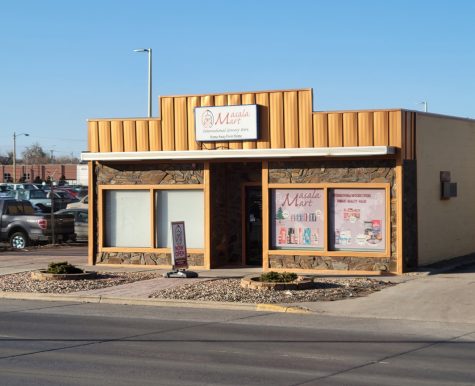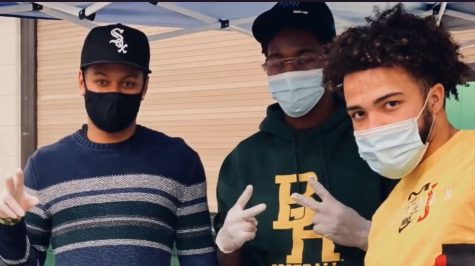Giving Credit Where Credit is Due: Newspaper Procedures
Imagine working at a job where employee turnaround averages 60 percent every four months, but the staff is always able to pull together to produce a professional product. This is what Dr. Mary Caton-Rosser faces every semester as the faculty advisor of the Jacket Journal.
Melissa Revilla currently on staff and has been a working with The Jacket Journal since fall 2013.
“I think The Jacket Journal is a good quality newspaper which actually has really good content and news that is relevant to the students,” Revilla said.
The Jacket Journal is the student-run newspaper at BHSU. Students come in as freshman and juniors, unsure of the task ahead of them. They leave as confident seniors; ready to take on the world with the knowledge they’ve gained. In the eyes of Dr. Caton-Rosser, graduating seniors who leave the fate of the organization in the hands of new students is not a bad thing. It gives students the opportunity to step up and take a leadership role, to learn new skills, and to learn from mistakes that are made. It gives the news organization a chance to grow and adapt.
Over the years the positions at the Jacket Journal have adapted to fit the needs of the organization. Currently the Jacket Journal has grown to include over 12 positions. The editor-in-chief is in charge, followed by the assistant editor and Visual Editor. The other vital positions include the copy editors, proofreaders, fact checkers, online editor, systems manager, photojournalist, advertising representative, distribution coordinator, and staff writers. Every year Dr. Caton-Rosser and the Jacket Journal staff work with students to fill open positions.
With change in the staff comes change in the process of how the organization runs. Each Editor-in-Chief has the ability to tweak the organization in ways he or she believes will make the organization run effectively.
“If we don’t have an editing process from a student learning perspective we couldn’t produce a professional product,” Dr. Caton-Rosser said.
The process of producing news for the students and community is an intense process that requires all of its members to be in constant communication. Although the editing process can be strenuous at times, it is necessary to keep everything on track and more importantly to produce what the readers want to see. Each one of these staff members has about 24 hours to get the materials to the next editor in line so materials can get published online in a timely fashion.
“It is fun, but a ton of work to get the newspaper put together,” said Devin Lynn, a recent BHSU graduate. “There was a lot of stress at times, but I learned a lot from the experience.”
Lynn spent three years working for the Jacket Journal. He started out as a Fact Checker and then made his way up the ranks to Content Editor and eventually became the Editor-in-Chief.
Currently the Jacket Journal works to produce a hard copy newspaper two or three times a semester, but it is working as its own entity every day, especially now with bhsumedia.com being updated multiple times a week.
Staff writers, practicum students, and contributing writers receive assignments on an array of topics from writing about sporting events to campus and community news, along with making info-graphs, radio podcasts, and videos. When assignments are sent out, students generally have a week to have them completed. From there the completed assignments are given to the assistant editor, who then divides them into two groups that are sent to the next people in the editing process, the fact checkers.
The fact checker’s job is to check the facts – ultimately making sure the information provide to the Jacket Journal’s readers is accurate and truthful. The fact checkers make sure the dates and times are correct, check that the people mentioned in the story are correct, that people have their appropriate titles, and making sure stories are not plagiarized and sources are credible.
When the fact checker’s are finished they send the materials on to the proofreaders. The proofreaders then check for things like punctuation, grammatical errors, and correct use of the Associated Press style. When they are done, the materials are then sent to the copy editors.
The copy editors double check for punctuation and grammatical errors, as well as the correct use of AP style. They also look at sentence structure and work to make sure the article flows smoothly. The copy editor then sends the materials to the editor-in-chief, who will then edit one final time.
“It seems that we all had a common goal, and were willing to work our butts off to accomplish the goal,” Lynn said. “One of the biggest lessons learned from working with the Jacket Journal was time management. There was endless amounts of work to get done.”
After a piece goes through this rigorous editing process it is considered for online and hard copy production. To produce a hard copy, the material has another process to go through.
“I think it [this editing process] works well because so far we are delivering good, quality content,” Revilla said.
Before the big night, the editor-in-chief decides what stories should be on each page. This ensures some guidelines and a general road map for students to work off of.
Then comes the night everyone has been building up to – production night. On production night the practicum students are the page editors. The practicum students and staff members all gather together in the newsroom, located in the basement of Jonas, to begin the process of producing our student newspaper. The members of the Jacket Journal begin work at 3 p.m. and often times stay as late as midnight.
“Production night was always extremely busy,” Lynn said.
Normally the page editors work in pairs, but on occasion there might be a single person working on a page. Each computer in the newsroom and some in the Digital Photo Lab are assigned a page number. Students then have access to the Jacket Journal server, which they can pull material from that page’s folder that contains material like stories, ads and graphics. Everything in that folder needs to be used on that specific page, which page editors quickly learn is hard to make everything fit and look aesthetically pleasing.
As students complete their assigned pages throughout the night, they need to be looked over by at least three different staff members – a copy editor, visual editor and finally the editor-in-chief. These three individuals check to make sure the page looks good and the articles are edited correctly. Often times there are corrections that need to be made and the page editors can’t leave until the page is finished.
When the page is complete, practicum students are released and then another editing process happens again. The pages are printed and the senior staff, and Faculty Advisor will read through everything one last time, making corrections and changes.
From the time students finish the pages to the time the campus has access to the production, it usually takes about a week to get everything created, edited and printed to become a professional product.
“Overall it has been a good and valuable experience,” Revilla said.
Lynn agreed “Overall, I enjoyed those three years. It was a lot of fun getting to work with different groups of practicum students and staff members,” said Lynn.
These processes are always evolving as the people are constantly changing with it. Staff members are in constant communication and practicum students are busy day in and day out. Our online content is developing rapidly and easily accessed 24/7. The Jacket Journal works to be the voice of the students, Black Hills State University, Spearfish, and the surrounding region.


